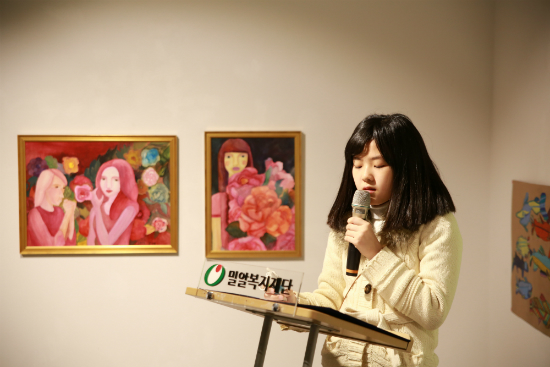Artist Kim Ji-wu (15, Gwanpyeong Middle School, presenter in top photo), who debuted in 2014 and has presented her works at more than 10 exhibitions in Korea, gave this reply to the question “What is good about art?” Verbal communication is not easy for Ms. Kim, who has level 2 autism. But when asked about her art and her dream, she answered in clear, definite tones. I met her on April 13 at a caf? in Gangseo-gu, Seoul. Her mother Shin Yeo-myeong (46), who is also her manager and spokesperson, sat beside her.
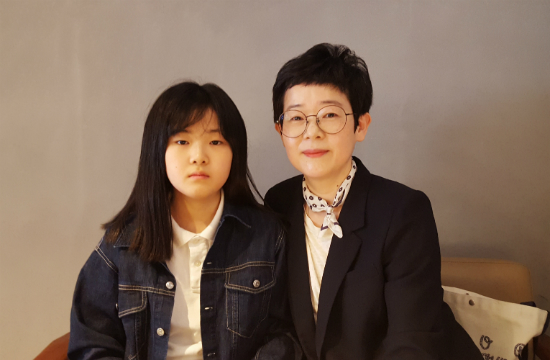
When her baby daughter was 18 months old, Ms. Shin noticed a strange symptom. Unlike her son at the same age, the little girl responded slowly to exterior stimuli.
When the local hospital said her daughter was autistic, this was hard for her to accept. She took the baby to a big hospital in another area for a complete examination, but the result was the same. Ms. Shin’s shock was so great that she had to receive treatment for depression.
In the midst of her distress, 30 months after her daughter’s birth, she began arranging various kinds of treatment for her including art therapy, hoping to alleviate the autism. Up to the age of three or four, her daughter was nearly inarticulate, just saying, “Uh, uh,” but with pictures it was different. When Ji-wu was looking at a book and saw a picture of a rabbit, instead of talking about it, she would draw its picture on paper.
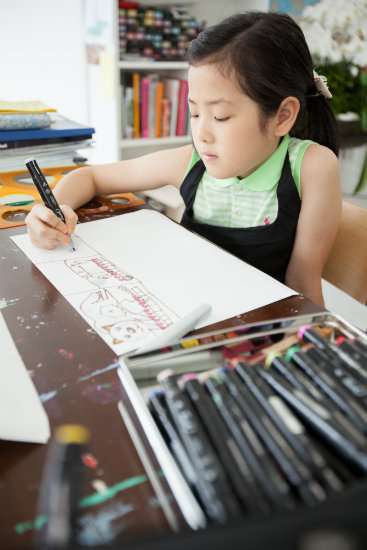
“Anybody who saw it would know what it was, she drew that well. From then on, I communicated with Ji-wu in pictures instead of speech. Because her pictures always had bright contents, I was reassured. I knew that even if she could not express her thoughts in words, her mind was happy.”
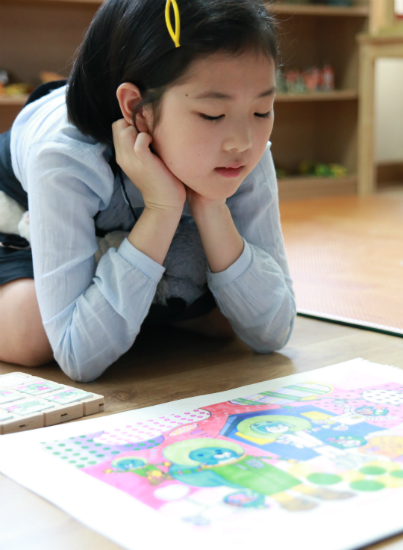
Kim Ji-wu’s talent began to shine in 2014 when she met an art therapist who had majored purely in art. Ms. Shin had made the decision to give her daughter’s aptitude priority over treatment-based classes, and this paid off. The art therapist who was teaching her said, “Different from other autistic children, she draws pictures that contain stories,” and recommended that she apply for participation in the Seeing & Spring Project of Miral Welfare Foundation (board chair: Rev. Hong Jeong-gil). That year the foundation, with support from KB Kukmin Card, had initiated the Seeing&Spring Project for children and youth with developmental disabilities, offering specialized art education with the goal of nurturing artists.
With the art therapist’s encouragement, Ji-wu applied for the project, and her pictures easily passed the tryout. From then on, she received specialized education once a week, and exhibited her works every year, so that now she is a respectable artist with a record of five regular Seeing&Spring exhibitions.
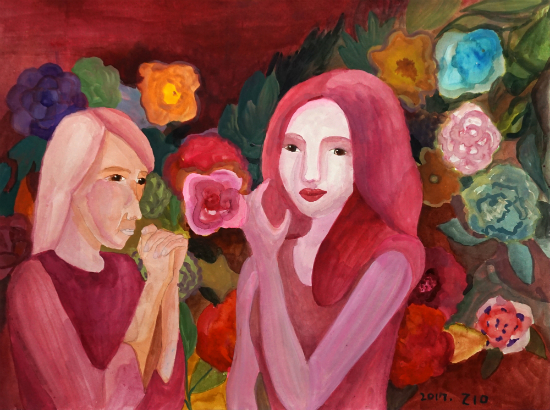
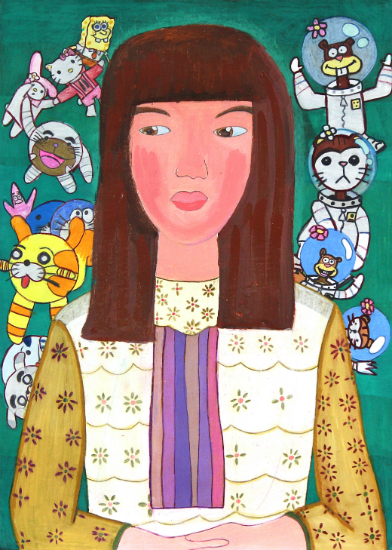
The biggest change undergone by Kim Ji-wu since she became an artist is that she can now communicate to a certain extent. In the past, she would burst into tears if offered a chance to talk, but now her verbal flexibility has grown to the point that she explains her exhibited works directly. Moreover, her mother said, she reveals some of her thoughts to others, and has more friends around her.
As Ji-wu’s school life and artistic activities have become smooth, her family has returned to daily life. With the broadening of her daughter’s sphere of activities, Ms. Shin, previously on continuous watch at her side, is now free to register for a master’s degree course at an education college. Another big change is that she now recognizes her daughter not as an object of care but as an object of respect.
Ms. Shin’s hope is that in future many more persons with disabilities will be given such opportunities to expand their communication and fulfill their dreams, like her daughter.
“Of course speech therapy is important, but the more essential thing for a developmentally disabled person is the attitude that “even if I’m different from others, I accept this positively.” The arts are a dimension where the difference of having a disability can become a strong point. I hope the Seeing & Spring Project will expand and that there will be more disabled persons’ families who can share with my family the happiness we feel.” (To become a regular supporter or make inquiries, call 1899-4774.)
Reporter Yang Minkyeong (grieg@kmib.co.kr), with Marion Kim (marionkkim@icloud.com)
Photo by intern reporter Shin Hyeon Ga
Photos provided by Miral Welfare Foundation
Original Article in Korean:
[장애인 복지, 밀알에서 기적으로] 그림 그리기 통해 ‘닫힌 마음’ 열고 세상과 소통한다: (3) 자폐성장애 극복한 화가 김지우양 이야기
